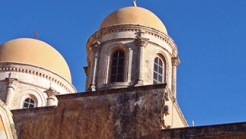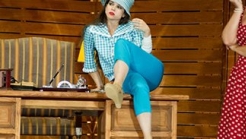

Greece
The Museum of Natural History Crete has existed since 1980. Includes five parts: zoological, botanical and anthropological, Paleontological, geological and Oruktologiko.
Since the establishment of the museum,major efforts are under way to create and subsequently for the enrichment and the classification of the collections listed in the museum's exhibits. The collections are composed of samples from Greece and the Mediterranean and is part of research efforts.Apart from material collected in the framework of research programs, each year organized systematic excursions for the taking of samples both in Greece and abroad.The laboratories,collections and offices are housed in buildings of the University of Crete at Knossos avenue. An important objective of the museum was to create exhibition space where the public would have come into contact with the collections at the Museum and would be informed of the natural environment.
A big step was taken in June 1998 when the Museum rented and organized a building 800 square meters in Heraklion Knossos avenue 157), which was exhibit space by June 2005. The extremely complex area of the eastern Mediterranean region approached the report from geological, ecological and cultural point of view , bordered with realistic representations ecosystems, exhibits from the collections of the museum, photographic material, diagrams and explanatory texts.
The museum today is housed in the building of the old electric Heraklion,which was granted by the municipality in Heraklion Crete University for this purpose.
Reports
The Megadioramata is an important part of the central exhibition area of the Museum and occupy three levels within the listed industrial building. The philosophy and their purpose is to view the environmental characteristics of the Mediterranean basin with reference center Crete and Greece. In Megadioramata emerges the lives in forests on wetlands, on the coast, the deserts and Alpine ecosystems in the Mediterranean
The "Erevnotopos" is an area 250 sq. m, specially designed for children. This is a thumbnail of the different ecosystems of the Mediterranean, enriched with many original and interactive games, where children, using all the senses, are aware of the nature and their organizations.
"Enceladus" represents a classroom, in which guests sitting in schooldays learn about the earthquake and the seismic activity in the eastern Mediterranean. Suitably configured programs in cooperation with the O. A. P. O. , in Greek and English language, offer guests to feel earthquakes up to 6 Richter and, at the same time be informed of the types of protection and good practices dealing with them. The programs are open daily and on weekends.
The Giant Dinothirio, an animal which has lived in Crete before 8.5 million years, reviving the museum's exhibits. The Museum of Natural History Crete discovered in the area of Agia Fire Sitia the frame one of the older animals of this kind. A group of scientists from the Museum and Dutch technicians managed to recompose, the actual dimensions of the phantom the Dinothirio. The body of the animal has dimensions that reach height 4.5 meters and length 6.5 meters. So, guests at the Museum have been able to see for the first time worldwide, how really looked the third largest mammal found in the world.
The research activities are in each contemporary museum the most basic functions. The research objectives of the ΜΦΙΚ part of the challenges presented by the natural environment of the Mediterranean region and in particular that of Crete and of other groups of islands where the great variety and the specificity is the rule.


The Monastery of Agia Triada of Τzagkarolon was built in the early 17th century by wanne Ιeremia and Larentio,venetian-cretan family of Τzagkarolon in smaller, property of hieromonk Joachim and Sofianou.


Although Crete hosts one-quarter of Greece’s annual visitors, it’s still possible to escape the crowds by heading south. Thanks to the rugged mountains that stretch across much of the island’s spine, southern Crete remains a place apart.


The Municipal Regional Theater Crete is a flourishing Theater Company Crete(E. DI.PE.K. ).In 1974, Alexis Μινωτής with a group Cretans, to protect endowed with enthusiasm and marketing offer, made reality the vision for establishing a theatrical agency in Crete. It was clear the Company Theater Crete with basic objective the revival of the Cretan Theater of regeneration.
1039 Ε 6061 01515 00